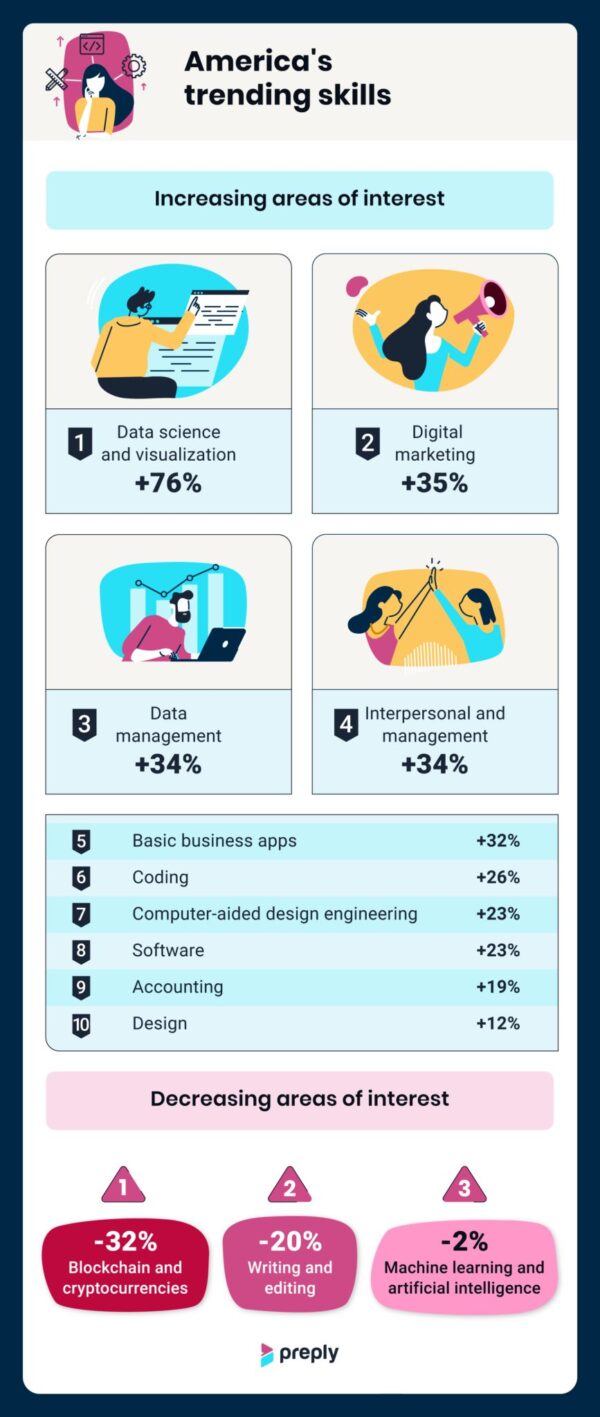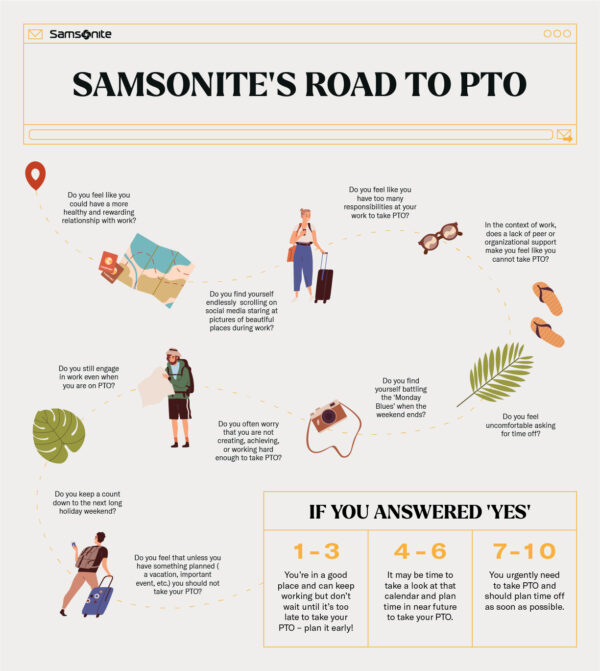Upskilling trends, how to encourage PTO use and more
Plus: PayPal’s Global Innovation Tournament and your weekly dose of inspiration.

Hi there, comms connoisseurs.
Let’s explore some notable stories from July 11-15, 2022 — and pull out a few timely, tactical takeaways along the way:
1. Upskilling trends you should be following
Studies show that offering robust upskilling programs is a major plus for employees. From data literacy courses to early-career development programs, providing employees with a way to level up their professional repertoire can increase retention and draw more jobseekers to your company.
A new report from Preply identifies the most in-demand upskilling areas for American workers.
The four fastest-growing areas of interest are data science and visualization, digital marketing and data management and interpersonal management.

Data literacy ranks quite highly, which is in line with previous research from Forrester and Tableau Software that says almost 80% of employees are more likely to stay at an organization that offers data literacy training.
Additionally, four of the five most coveted skills for American workers are coding languages: Python, SQL, Java and C++. Overall, Excel is the second-most popular skill that employees desire to have.
Upskilling is often a multi-department venture, with different business operations wanting different skills for their employees. Comms pros can act as a go-between for departments and their workers by finding a compromise between what workers want to learn and what their departments want.
Does your company offer upskilling? Let us know your best practices on Twitter @RaganComms.
2. PayPal’s global innovation tournament engages employees and its C-suite
The age-old question of how to engage employees is one that internal communicators will grapple with to the end of time. To answer it, fintech giant PayPal has actually created a global tournament in its quest to spark innovative business solutions and foster engagement in every employee, from average full-time workers to its C-suite.
The Harvard Business Review reports:
Participants in the company’s annual Global Innovation Tournament submit their ideas, as in conventional contests. But in a subsequent round, they act as investors, placing wagers on what they think are the best ideas, regardless of the source. In addition, the investment round is open to all of the company’s approximately 30,000 full-time employees.
Instead of real money, employees are given WoW tokens, which are PayPal’s internal blockchain-based currency. Employees who invest in winning ideas receive more WoW tokens, which can be redeemed “for invaluable experiences such as bringing a boss for a skydiving lesson, learning the martial art of Krav Maga directly from CEO Dan Schulman, or having CTO Sri Shivananda come to your house and set up your home network and smart speaker system.”
“Over 90% of respondents said they joined the tournament to improve the customer experience or to help the company be more successful,” HBR reports. “A similar percentage thought the tournament was “fun” in that it let them see what their peers thought of their ideas.”
The gamification of employee engagement is a thin line to walk. On one hand, you want to give employees an opportunity to interact with their colleagues and superiors in a casual, fun way. On the other hand, gamification can quickly become insincere and come off to employees as a waste of valuable time—or worse, come off as manipulative.
PayPal’s tournament provides a challenge with a clear business goal and incentives that are tangibly valuable to employees, rather than playing trivia with gift card prizes.
3. Employees aren’t taking their PTO. Here’s how to help.
A cornerstone of employee wellness is making sure that workers aren’t letting their vacation days sit idle — and that happy employees take time off.
A new survey from The Harris Poll and luggage company Samsonite found that 65% of full-time workers say they urgently need a vacation from work, while 56% day they feel burnt out at work.
However, of the employees surveyed, nearly 75% of them say they’ve used less than half of their PTO for the year so far. And 20% of employees say they don’t have any PTO scheduled in the next three months.
From the news release:
This reluctance to take PTO comes despite widespread awareness of the considerable mental and physical benefits of taking time away from work. The poll found that 86% of full-time employees agreed that taking more vacation time would improve their mental health and 80% agreed that they always feel refreshed at work after they take vacation time. Most full-time employees find the complications around taking PTO outweigh the benefits with 66% wishing it were easier for them to take time off from work.
So how can comms pros encourage their employees to use their PTO?
If you’re starting from scratch, consider consulting Samsonite’s “Road To PTO” quiz, which asks workers to think about queries like whether they feel uncomfortable taking time off and if they count the days until the next holiday weekend.

As Sarah Plaster, Aflac’s organizational comms director says, “Employee perceptions of how PTO is viewed at their organizations are strongly associated with their beliefs of whether or not their employer cares about their mental and physical health.”
She continues, “I think it is fair to say companies that are providing flexibility and generous PTO are helping their employees cope with burnout if taking time off is seen as a positive thing in the culture. As leaders, we need to use our time off and talk about it to reinforce that time off is provided by the company to use.”
4. How about some good news?
This week, let’s draw inspiration from:
- The new deep space images from NASA’s James Webb Telescope.
- The fact that working out on the weekends is just as good for you as a five-day routine. (Phew!)
- The replacement of a statue of a Confederate general at the U.S. Capitol with one of civil rights pioneer Mary McLeod Bethune.
- Ragan Training, which is an incredible resource for communication inspiration and education.
- You also deserve an award. Get your due here!
Take good care of yourselves, comms champions, and keep up the good work.







